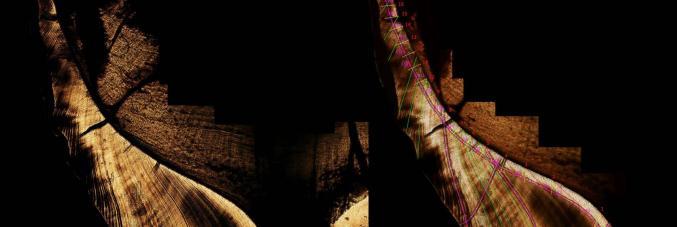
Research provides insight into the eating habits of Homo erectus
25.01.2023
An international scientific team led by Professor Wolfgang Müller from the Goethe University of Frankfurt and the Senkenberg Research Institute and Natural History Museum in Frankfurt recently published a paper entitled Dietary strategies of Pleistocene Pongo sp. and Homo erectus on Java (Indonesia). The team includes the research of his student Jülide Kubat, Luca Bondioli (Department of Cultural Heritage of the University of Padua) and Beatrice Peripoli (former Department of Cultural Heritage of the University of Padua student and current PhD student at Sapienza University of Rome)
Through the study of teeth, researchers compared the eating habits of Homo erectus with those of orangutans and other contemporary animal species. These human ancestors and the other animal species in the study lived on the island of Java during the Pleistocene (Ice Age) between 1.4 million and 700,000 years ago marked by monsoon rainforests, open wooded landscapes, and grassy savannahs.
Throughout the course of a year, our ancestors switched from a plant-based diet to a mixed diet, making them less dependent on the availability of seasonal food than other species that inhabited the island, such as orangutans.
Researchers embedded teeth in resin to analyse its enamel, then cut them into wafer-thin slices about 150 micrometres thick. Subsequently, a special laser removed a small amount of enamel from the thin sections, chemically analysing them using a mass spectrometer to detect the presence of several chemical elements, including strontium and calcium, found in both bones and teeth (Laser Ablation Inductively Coupled Plasma Mass Spectrometry (LA-ICPMS).
The teeth of the hominids orangutan and Homo erectus were quite exciting as researchers discovered annual cycles during which the dietary composition of great apes and humans changed: both showed variations during the years, but the regular Sr/Ca peaks were much more pronounced for the orangutan than for Homo erectus.
Jülide Kubat, the first author of the publication, explains: “These peaks indicate an abundant supply of plant food in the wet season, during which the rainforest, for example, produced many types of fruit. During the dry season, orangutans switched to other food sources, which may have included insects or eggs. By contrast, Homo erectus, as an omnivore and occasional carnivore, was less dependent on seasonal food supply – as indicated by the less pronounced peaks and lower Sr/Ca values.”



